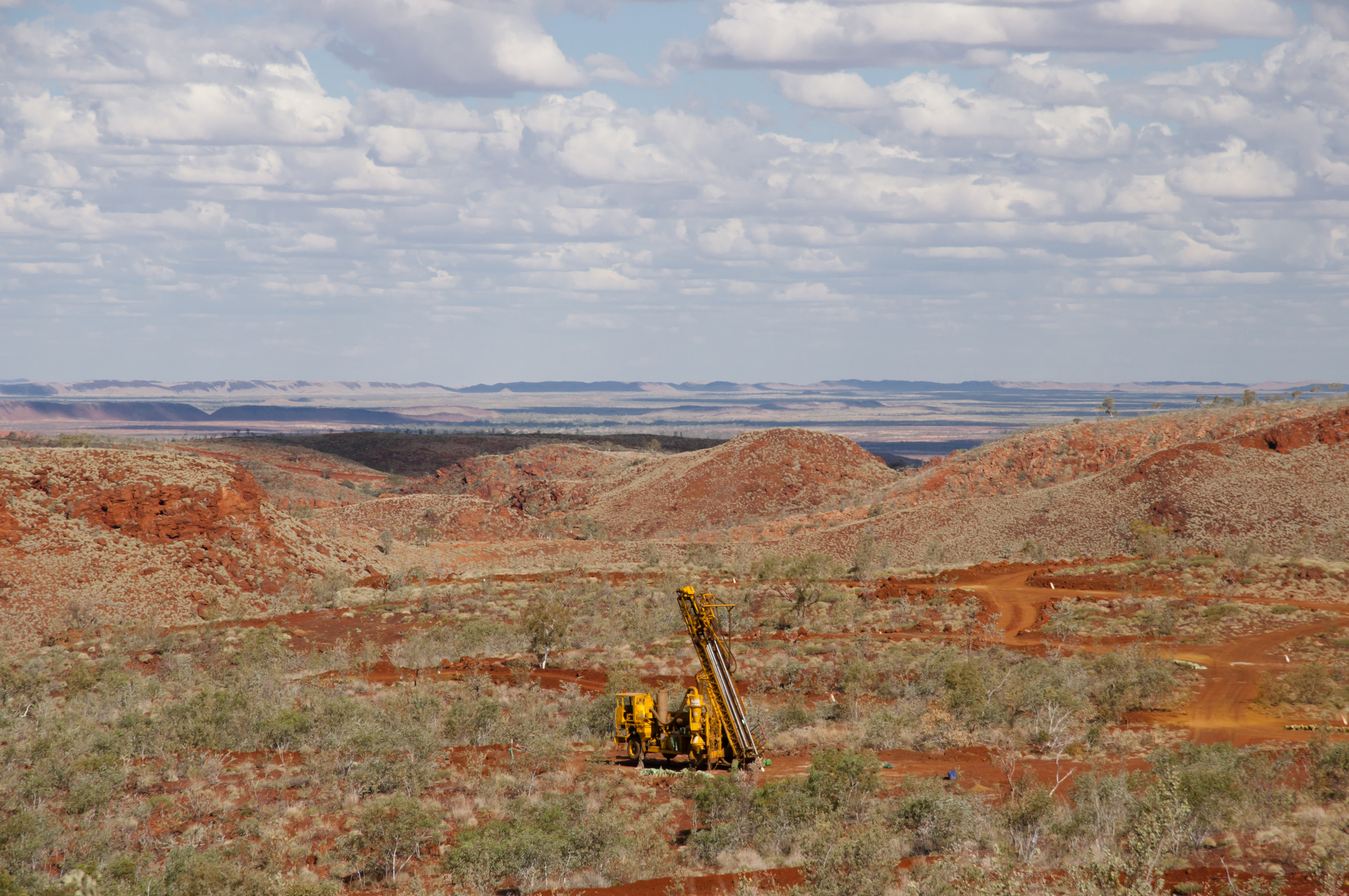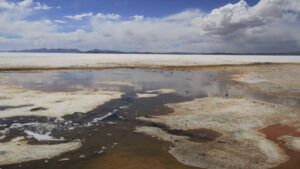Market volatility be damned, investors in junior explorers are still willing to risk it for the biscuit

Pic: Adrian Wojcik/iStock via Getty Images
- Exploration spending by ASX listed explorers hit $1.04 billion in the June quarter, the most since at least 2013
- New figures show the market for miners is strong, despite the doom and gloom around inflation, rates, Russia and China, with 61 small caps raising more than $10m
- BDO’s Sherif Andrawes says the need to explore for battery metals is supporting investment in the resources sector
The word on the street is the junior exploration sector is going to find it tough to raise capital and will have to tighten its belt as rising interest rates, inflation, Russia’s war with Ukraine and China’s Covid woes hammer sentiment in the sector.
Maybe don’t believe everything you hear.
New figures released today by accounting firm BDO show exploration spending at the junior end of the market rose 25% in the June quarter to $1.04 billion.
It is first time since BDO began tracking the junior exploration in 2013 that companies making 5B reports on the ASX have spent more than $1 billion on drilling and other associated activities.
It comes after spending fell from $973m in the December quarter to $832m in the March quarter.
“The question the June 2022 results ask is whether this quarter simply reflected a ‘catch up’ on a pause in March 2022 or whether it truly reflects a new upwards trend?” BDO said in its report.
“In our view it most likely shows that the death knell that was rung in the March quarter was a false one.
“The sector is alive and well and we need it to be to meet the world’s demand for the minerals required to support the energy transition.”
Capital raisings are in strong health as well. Far from tightening the purse strings, investor capital flowed at the little end of town.
61 companies raised $10 million or more in the June quarter, dominated by battery metals like lithium, while 29 companies IPO’d and reported their expenditure for the first time recording a combined financing influx of $330, 15 of them focused on battery metals. That was up from 16 in March.
The number of companies raising serious dough was up from 44 in the March quarter, accounting for 77% of the funds raised, $600.5 million heading into the pockets of lithium companies alone led by raisings from Sayona Mining (ASX:SYA), Leo Lithium (ASX:LLL), Vulcan Energy (ASX:VUL) and Lake Resources (ASX:LKE).
Lithium’s dominance is unsurprising. While gold, copper and nickel prices have come down in the past few months, lithium continues to trade near record highs, with Australian spodumene concentrate fetching upwards of US$6500/t on the spot market.
BDO’s figures match up with stats this week from the Australian Bureau of Statistics, which showed Australian miners spent $1.053 billion on drilling in the three months to June 30, more than any time since the mining boom in 2012, with drilling for gold ($420.3m) near record levels and exploration for “other metals”, a field including lithium, rising above $100m for the first time.
Why does the market remain so buoyant?
Despite the obvious headwinds, BDO’s quarter explorer cash update shows the market for small cap explorers remains buoyant.
BDO head of global natural resources Sherif Andrawes told Stockhead massive demand for metals for lithium ion batteries and renewables and cashed up bank accounts across the sector meant juniors were in stronger shape than many commentators think.
“There’s many factors there. One is that the demand for the commodities that they offer or explore for remains high, particularly in relation with the energy transition. There’s no doubt about that,” he said.
“Another one is that the explorers themselves aren’t really prone to risk of interest rate rises, because they’re generally not geared too much, they’re only funded by equity, rather by debt.
“Another one is that they are quite well cashed up. So because they’ve raised decent amounts of money over the last few years, they’re quite resilient to that and haven’t increased costs too much; in terms of administration costs they’re quite lean.”
Ultimately, Andrawes sees demand for battery metals and investors’ recognition of the field as a long term thematic as the biggest factor in their support for junior miners.
“Ultimately, I think it’s the demand for the commodities they’re exploring for, people are looking long term and that demand is still there,” he said.
“The price (of some metals) has come off in the short term, but there’s two other ways to look at that.
“Compare it to long term averages (prices are) still high.
“If you look at it compared to what the demand is likely to be for these commodities over the longer term in the future, I think that there is an expectation that demand is there, and the supply isn’t and so therefore, prices will go up in the longer term.”
Energy crisis also brings fossil fuels in from the cold
Gold ($268.86m) typically dominates BDO’s list of financing inflows, but alongside battery metals like lithium and graphite, investors piled similar amounts of cash into commodities like uranium ($284.17m), oil and gas ($190.80m) and coal ($112.15m).
Cash also flowed for graphite ($216.44m), rare earths ($108.53m) and nickel-copper ($100.11m), although the latter was largely down to a single large equity raising by nickel, copper and PGE darling Chalice Mining (ASX:CHN).
With Russia’s war in Ukraine putting pressure on energy prices, sending oil prices above US$100 a barrel and thermal coal to records in excess of US$400/t, Andrawes said it was unsurprising to see investors put money into commodities previously deemed unfashionable due to ESG principles.
Uranium inflows were dominated by a $236 million raising from Paladin Energy (ASX:PDN), which reached an FID on the restart of its Langer Heinrich mine in Namibia.
Uranium spot prices are around US$51.75/lb, almost three times the cyclical lows seen in 2016 when it was regarded as the “world’s worst commodity”.
“We’ve seen uranium quite doing quite well in terms of money being raised for uranium projects, which fall into that energy transition but in a slightly different way,” Andrawes said.
“For several years uranium was in the wilderness and it’s only really in the last 12 months or so uranium has really come back to the fore as an option.
“Obviously, there’s mixed views on what that can do where it sits in the whole energy transition, but there’s certainly a strong view that it has a place to play in that.”
Is there any devil in the detail?
Andrawes says some of the additional investment in exploration could be driven by higher prices paid for services, labour and materials in a period of super high cost inflation.
Meanwhile, while a still healthy 87% of explorers have cash balances in excess of $1m and average cash balances at $13.15m are 35% the two-year average, the number of explorers with cash balances above $4m has fallen slightly to ~50%.
Andrawes said while not as healthy as last year, BDO was continuing to see a strong pipeline of IPOs.
Related Topics

UNLOCK INSIGHTS
Discover the untold stories of emerging ASX stocks.
Daily news and expert analysis, it's free to subscribe.
By proceeding, you confirm you understand that we handle personal information in accordance with our Privacy Policy.








